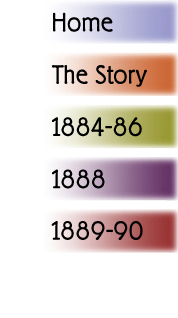The final work measures two by three meters. We can sense the warmth of a summer day, the sense of relaxation, the quiet dignity of each figure taking his rest. In the hazy background can be seen the factory, from which the men have taken their leave.
Seurat's use of color would underscore the effects of light and human figures upon the water. The interplay of complementary colors -- red against green, and orange against blue -- was noted for its subtlety, as opposed to the stark contrasts of later "post-impressionist" painters like Vincent van Gogh (1853-90).
Bathers at Asnieres was rejected by the artistic status-quo of the official Salon, and so was introduced at an alternative exhibition in Paris in 1884, where it was praised by the critics who heralded the avant-garde of impressionism. One of them, Arsene Alexandre wrote: "The Bathers shows Seurat to be the artist of the young school, one of the few who understand how to compose a major work and use new techniques whilst doing so." (Duchting, page 24)
The viewer can see, in the detail of the painting, a small ferry boat crossing the Seine. On board are a few of the local gentry, en route to an outing on an island across the river -- the subject of our next chapter.
 |

|
